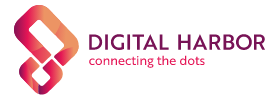Social Forms: a leap in Forms technology
One arena where paper-based systems still seem to hold a distinct edge over its digital counterparts is Forms. Indeed, while many online forms do exist, they seem unequipped to deal with the complexities involved in a normal form-filling exercise. Sometimes, instead of advancing the capabilities of form, they seem to turn the wheel back.
Consider these:
In a typical enterprise scenario, a form needs to be filled through collaboration of multiple people. However, most forms are designed keeping a single user in mind who would presumptively be able to complete the entire process in one shot. The form-related conversations happen in a parallel world, which are mostly not in a usable form or format for the task in hand.
In some cases, the user cannot skip some fields and revert to them later. So, the user is forced to collate all the requisite data first and only then begin the form-filling. Further, there is no provision for a reviewer who might validate the form and finally submit it.
Assistance in the form-filling comes in the form an FAQ located elsewhere which can only give an overall picture. Or worse, the only way to seek help might be to contact a person from the other end.
The above-mentioned aspects are how digital forms are behind the paper forms. But, if we look at how digital technologies have upgraded everything else we see, we pause to ponder about the leap that forms need to make.
Social Forms, a new technology from the stable of Digital Harbor is not just an answer to the above but also pre-empts many disruptions that the form-filling process might occasion.
We’ll discuss three capabilities that are unique to Social Forms:
- Social Form ties data, documents & conversations vs. just data
Harnessing the advantages of the digital medium to the fullest, Social Forms provides for intelligent filling of data (prepopulating, learning based auto-fill, smart validation). Mapping data and documents to extract requisite information faster, this technology puts them in conjunction with the conversations. While conversations around a task happen all the time, they lie scattered thus incapacitating them from meaningful contribution. With context-driven collaboration comes a unique way of deriving value from every element within the workflow.
- Social Form enables two-way collaboration vs. one-way submission
In-application collaboration tools like Share, Social Chat, Messaging, Follow me, Reminders can be provisioned (like how Google Docs is transforming documents-based collaboration). Multiple users can work on different aspects of form simultaneously (with signatures) and with incomplete submission allowed (thanks to elastic workflows to support processes), it eases one of the chief bottlenecks of today’s forms.
- Social Form guides user vs. onus on user to understand and fill appropriately
Most forms leave user to fend for themselves, and it is entirely up to user to understand and fill the right information. Social Forms eases the burden of the user significantly through dynamic hover help that provides contextual intelligence. Users can have a conversation with the form and proactively collect the information required of them. Suggesting where to find data or documents is another additional feature of the Social Form.
The above simply scratches the surface of what Social Forms are capable of accomplishing. This is a giant leap forward in terms of how enterprises leverage the concept of forms.
In the next article of the series, we will explore other concepts incorporated in the Social Form.
